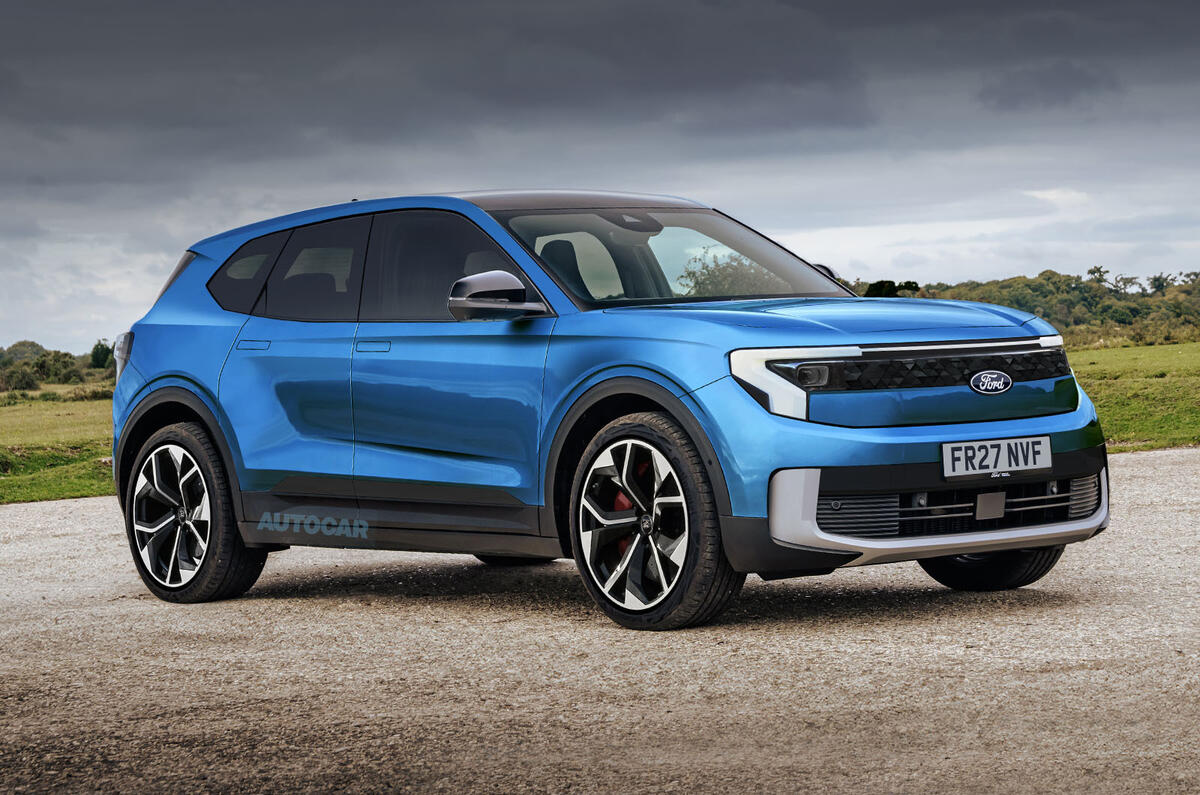Ford is preparing to launch a crucial new Focus-sized crossover as the first step in a radical rethink of its European gameplan.
Following the landmark unveiling of a new platform for affordable EVs in the US, Ford is expected to follow up soon with details of how it will expand and electrify its European range – emphasising its commitment to remaining an important player in the region’s car market.
Ford took the Fiesta out of production in 2023 so it could start building the electric Explorer and Capri crossovers – which cost around twice as much as the petrol supermini – at its Cologne factory in Germany, leaving the Puma as its cheapest car.
With the Focus due to end production in November as Ford shuts its Saarlouis factory in Germany, the company’s car line-up is, on average, far more expensive than it has been at any point in its 122-year history.
But a wide-reaching shake-up of the firm’s European business in the coming years – which is set to be detailed soon – is intended to restore it to a mass-market volume player that once again does battle for sales chart supremacy in the region, while boosting its electric vehicle sales mix with the introduction of more affordable models.
The company will put a stake in the ground in 2027 with the launch of a new mid-sized crossover, built in Spain and effectively filling the gap left by the Focus when it retires later this year.
New 'Focus' SUV
With an annual capacity of 300,000 units at its Valencia plant in Spain, the new crossover could become one of Ford’s best-selling model lines globally.
It will not replace the Kuga, but rather will be sold alongside it as a separate model line that introduces a ‘multi-energy’ powertrain offering with petrol-hybrid and electric drivetrains, as it has done with the Puma.
As the two cars will be built in parallel at Ford’s Valencia plant, it is also expected to be a close match size-wise – to avoid the need for costly alterations to the production line and process – while also sharing key components.
![]()








Join the debate
Add your comment
Why bother to even mention the Focus in this article, its pretty clear that this is a Kuga equivalent, and yet another SUV to add to Ford's line up. Fortunately there are still other manufacturers who offer a greater selection of bodystyles for those of us that don't want a jacked up vehicle.
Ford now Focus entirely on profit and cost reductions, if this cost's say £500 more to make than a hatchback and it sells for £3,000 more, it generates an extra £2,500 profit.
Will it sell? Probably not!
Why on earth is it beyond them to make an actual car?